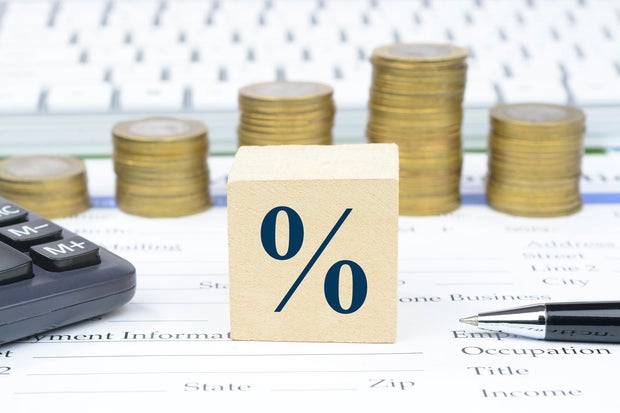Getty Images
There’s no question that the mortgage rate environment has shifted dramatically over the last couple of years amid issues with stubbornly high inflation. While mortgage rates were hovering under 3% in early 2021, the resulting uptick in inflation sent the Federal Reserve on an aggressive rate hike campaign that caused mortgage rates to soar to over 8% by late 2023.
And, while the Fed’s moves have helped to temper inflation somewhat, we aren’t out of the woods just yet. The last couple of reports showed that inflation has been ticking back up, and the Fed rate is now paused at a 23-year high. In turn, borrowing rates remain elevated, and the average rate on a 30-year fixed mortgage is now 7.36% (as of May 1, 2024), over twice what it was during the height of the pandemic.
These sharply higher borrowing costs, coupled with today’s elevated home prices, have made purchasing a home much more expensive for buyers, as higher rates mean paying a lot more in interest on the money you borrow. Many would-be homeowners have, in turn, opted to put their plans on pause, hoping that mortgage rates would eventually drop and make homeownership more affordable. But will mortgage interest rates fall in May? Below, we’ll break down what you should know.
Get started on your homebuying journey and compare the top mortgage rates today.
Will mortgage interest rates fall in May?
Earlier this year, many experts forecasted that the Fed would start cutting interest rates by mid-2024 as inflation cooled and the economy slowed. This fueled expectations that mortgage rates could begin to trend lower in the coming months.
However, it now appears unlikely that mortgage rates will drop in May. At its May 1st meeting, the Federal Reserve opted to pause interest rate hikes and leave the federal funds rate at 5.25% to 5.50%, its highest level since 2001.
The decision to keep rates on pause was driven, in large part, by the latest inflation data, which showed consumer prices unexpectedly rebounded in February, when inflation was up 3.2%, and again in March, when the rate ticked up even higher to 3.5%. While these readings were still well below the peak of 9.1%, which occurred in mid-2022, they still raised concerns that inflationary pressures could be reaccelerating.
And, with inflation proving to be stickier than expected, the Fed has signaled that additional rate hikes aren’t off the table in the future if price pressures fail to moderate further. The central bank remains focused on returning inflation to its 2% target, and it’s likely to remain proactive until that point.
So unless upcoming inflation reports show a clear downward trajectory, it’s unlikely mortgage rates will decline substantially in May. In fact, mortgage rates could push even higher depending on future economic data and the Fed’s policy response.
Find out the best rates you could get on a mortgage loan right now.
How to get a lower mortgage rate in today’s borrowing landscape
While we may not see any significant mortgage rate declines this month, there may still be ways to secure a lower rate if you’re buying a home right now. Here’s how:
Buy mortgage points
You can “buy down” your mortgage rate by paying discount points upfront at closing or by having them rolled in to your overall loan. While it can vary by lender, one point typically equals 1% of the loan amount and generally lowers your rate by 0.25%. Buying mortgage points may require paying more upfront on your loan, but it can make sense if you plan to stay in the home long enough to recoup the costs through lower monthly payments.
Make a larger down payment
Lenders typically offer lower rates to borrowers who make a larger down payment, as this reduces their risk exposure. A 20% down payment is ideal, but putting down 25% or more can help you qualify for the most attractive rate pricing, depending on the lender and your overall borrowing profile.
Improve your credit score
Your credit score is a key factor in the mortgage rate you’ll receive. Higher scores signal less default risk to lenders. So, if you’re trying to secure the lowest rate possible, focus on paying down debts, fixing any errors on your credit report and avoiding any new credit inquiries to give your score a boost before applying.
Consider an ARM loan
An adjustable-rate mortgage (ARM) may offer a lower introductory interest rate compared to a 30-year fixed mortgage. However, the rate is only fixed for an initial period, after which it will adjust periodically based on market rates. That can make them a risky proposition for certain buyers, but ARM loans can still make sense for those who don’t plan to stay in the home long term, or for those who expect rates to decline in the future.
Shop around thoroughly
Not all lenders offer the same rates, fees and qualification standards. Getting quotes from multiple banks, credit unions and mortgage companies is crucial to ensure you find the most competitive rate and terms available based on your financial profile.
The bottom line
Rates are still hovering well above what they were just a few years ago, and with today’s Fed announcement, it seems unlikely that mortgage rates will drop in May. That said, there may still be ways for borrowers to secure a lower mortgage rate, even in today’s unique interest rate environment. That typically hinges on taking proactive steps and exploring all available options — and following the tips above may also help you make the most of today’s less-than-favorable rate environment.






